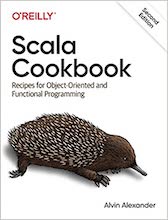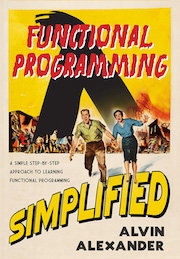Java example source code file (NimbusIcon.java)
The NimbusIcon.java Java example source code
/*
* Copyright (c) 2005, 2006, Oracle and/or its affiliates. All rights reserved.
* DO NOT ALTER OR REMOVE COPYRIGHT NOTICES OR THIS FILE HEADER.
*
* This code is free software; you can redistribute it and/or modify it
* under the terms of the GNU General Public License version 2 only, as
* published by the Free Software Foundation. Oracle designates this
* particular file as subject to the "Classpath" exception as provided
* by Oracle in the LICENSE file that accompanied this code.
*
* This code is distributed in the hope that it will be useful, but WITHOUT
* ANY WARRANTY; without even the implied warranty of MERCHANTABILITY or
* FITNESS FOR A PARTICULAR PURPOSE. See the GNU General Public License
* version 2 for more details (a copy is included in the LICENSE file that
* accompanied this code).
*
* You should have received a copy of the GNU General Public License version
* 2 along with this work; if not, write to the Free Software Foundation,
* Inc., 51 Franklin St, Fifth Floor, Boston, MA 02110-1301 USA.
*
* Please contact Oracle, 500 Oracle Parkway, Redwood Shores, CA 94065 USA
* or visit www.oracle.com if you need additional information or have any
* questions.
*/
package javax.swing.plaf.nimbus;
import javax.swing.Painter;
import sun.swing.plaf.synth.SynthIcon;
import javax.swing.plaf.synth.SynthContext;
import javax.swing.*;
import java.awt.*;
import java.awt.image.BufferedImage;
import javax.swing.plaf.UIResource;
/**
* An icon that delegates to a painter.
* @author rbair
*/
class NimbusIcon extends SynthIcon {
private int width;
private int height;
private String prefix;
private String key;
NimbusIcon(String prefix, String key, int w, int h) {
this.width = w;
this.height = h;
this.prefix = prefix;
this.key = key;
}
@Override
public void paintIcon(SynthContext context, Graphics g, int x, int y,
int w, int h) {
Painter painter = null;
if (context != null) {
painter = (Painter)context.getStyle().get(context, key);
}
if (painter == null){
painter = (Painter) UIManager.get(prefix + "[Enabled]." + key);
}
if (painter != null && context != null) {
JComponent c = context.getComponent();
boolean rotate = false;
boolean flip = false;
//translatex and translatey are additional translations that
//must occur on the graphics context when rendering a toolbar
//icon
int translatex = 0;
int translatey = 0;
if (c instanceof JToolBar) {
JToolBar toolbar = (JToolBar)c;
rotate = toolbar.getOrientation() == JToolBar.VERTICAL;
flip = !toolbar.getComponentOrientation().isLeftToRight();
Object o = NimbusLookAndFeel.resolveToolbarConstraint(toolbar);
//we only do the +1 hack for UIResource borders, assuming
//that the border is probably going to be our border
if (toolbar.getBorder() instanceof UIResource) {
if (o == BorderLayout.SOUTH) {
translatey = 1;
} else if (o == BorderLayout.EAST) {
translatex = 1;
}
}
} else if (c instanceof JMenu) {
flip = ! c.getComponentOrientation().isLeftToRight();
}
if (g instanceof Graphics2D){
Graphics2D gfx = (Graphics2D)g;
gfx.translate(x, y);
gfx.translate(translatex, translatey);
if (rotate) {
gfx.rotate(Math.toRadians(90));
gfx.translate(0, -w);
painter.paint(gfx, context.getComponent(), h, w);
gfx.translate(0, w);
gfx.rotate(Math.toRadians(-90));
} else if (flip){
gfx.scale(-1, 1);
gfx.translate(-w,0);
painter.paint(gfx, context.getComponent(), w, h);
gfx.translate(w,0);
gfx.scale(-1, 1);
} else {
painter.paint(gfx, context.getComponent(), w, h);
}
gfx.translate(-translatex, -translatey);
gfx.translate(-x, -y);
} else {
// use image if we are printing to a Java 1.1 PrintGraphics as
// it is not a instance of Graphics2D
BufferedImage img = new BufferedImage(w,h,
BufferedImage.TYPE_INT_ARGB);
Graphics2D gfx = img.createGraphics();
if (rotate) {
gfx.rotate(Math.toRadians(90));
gfx.translate(0, -w);
painter.paint(gfx, context.getComponent(), h, w);
} else if (flip){
gfx.scale(-1, 1);
gfx.translate(-w,0);
painter.paint(gfx, context.getComponent(), w, h);
} else {
painter.paint(gfx, context.getComponent(), w, h);
}
gfx.dispose();
g.drawImage(img,x,y,null);
img = null;
}
}
}
/**
* Implements the standard Icon interface's paintIcon method as the standard
* synth stub passes null for the context and this will cause us to not
* paint any thing, so we override here so that we can paint the enabled
* state if no synth context is available
*/
@Override
public void paintIcon(Component c, Graphics g, int x, int y) {
Painter painter = (Painter)UIManager.get(prefix + "[Enabled]." + key);
if (painter != null){
JComponent jc = (c instanceof JComponent) ? (JComponent)c : null;
Graphics2D gfx = (Graphics2D)g;
gfx.translate(x, y);
painter.paint(gfx, jc , width, height);
gfx.translate(-x, -y);
}
}
@Override
public int getIconWidth(SynthContext context) {
if (context == null) {
return width;
}
JComponent c = context.getComponent();
if (c instanceof JToolBar && ((JToolBar)c).getOrientation() == JToolBar.VERTICAL) {
//we only do the -1 hack for UIResource borders, assuming
//that the border is probably going to be our border
if (c.getBorder() instanceof UIResource) {
return c.getWidth() - 1;
} else {
return c.getWidth();
}
} else {
return scale(context, width);
}
}
@Override
public int getIconHeight(SynthContext context) {
if (context == null) {
return height;
}
JComponent c = context.getComponent();
if (c instanceof JToolBar){
JToolBar toolbar = (JToolBar)c;
if (toolbar.getOrientation() == JToolBar.HORIZONTAL) {
//we only do the -1 hack for UIResource borders, assuming
//that the border is probably going to be our border
if (toolbar.getBorder() instanceof UIResource) {
return c.getHeight() - 1;
} else {
return c.getHeight();
}
} else {
return scale(context, width);
}
} else {
return scale(context, height);
}
}
/**
* Scale a size based on the "JComponent.sizeVariant" client property of the
* component that is using this icon
*
* @param context The synthContext to get the component from
* @param size The size to scale
* @return The scaled size or original if "JComponent.sizeVariant" is not
* set
*/
private int scale(SynthContext context, int size) {
if (context == null || context.getComponent() == null){
return size;
}
// The key "JComponent.sizeVariant" is used to match Apple's LAF
String scaleKey = (String) context.getComponent().getClientProperty(
"JComponent.sizeVariant");
if (scaleKey != null) {
if (NimbusStyle.LARGE_KEY.equals(scaleKey)) {
size *= NimbusStyle.LARGE_SCALE;
} else if (NimbusStyle.SMALL_KEY.equals(scaleKey)) {
size *= NimbusStyle.SMALL_SCALE;
} else if (NimbusStyle.MINI_KEY.equals(scaleKey)) {
// mini is not quite as small for icons as full mini is
// just too tiny
size *= NimbusStyle.MINI_SCALE + 0.07;
}
}
return size;
}
}
Other Java examples (source code examples)Here is a short list of links related to this Java NimbusIcon.java source code file: |
 The search page
The search page Other Java source code examples at this package level
Other Java source code examples at this package level Click here to learn more about this project
Click here to learn more about this project
